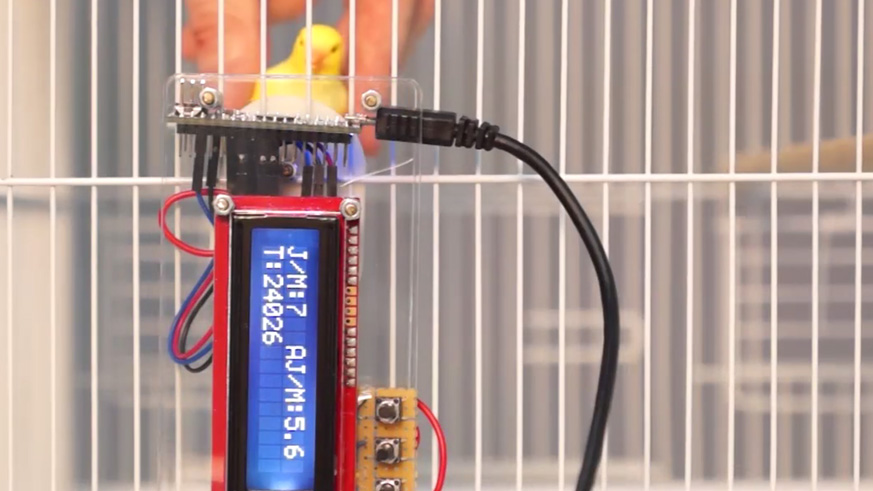Erdbeben sind eine der letzten unvorhersehbaren Geißeln der Menschheit. Mit technischen Mitteln ist es lediglich möglich, Erdbeben bis zu 40 Sekunden vorherzusagen. Allerdings wurde beobachtet, dass Tiere sich bis zu 72 Stunden vor einem Beben nervös verhalten können. „Earlybird“ ist ein Erdbebenfrühwarnsystem, das dieses Verhalten misst und erstmals statistisch verwertbare Daten liefert. Es misst die Anzahl der Sprünge, die ein Kanarienvogel in seinem Käfig macht. Jedes Mal wenn der Vogel von einer Stange zur anderen springt, wird dies von einer Prozessoreinheit gezählt und an einen Server geschickt. Hier werden die Daten statistisch ausgewertet und mit denen der anderen Käfige aus der Region verglichen. Springt ein Vogel mehr als gewöhnlich , wird dies keinen Alarm auslösen, werden allerdings viele Vögel in derselben Region aktiver, könnte dies ein Zeichen für ein nahendes Beben sein.Earthquakes are one of the last completely unpredictable scourges for mankind. With technical means it is possible to predict an earthquake just 40 seconds in advance. However, it is often observed that animals behave nervously before an earthquake and especially small animals can react up to 72 hours before the disaster. “Earlybird” is an earth-quake warning system that seeks to measure this behaviour and for the first time ever produces statistically viable data. It measures the amount of jumps a canary bird does in its cage. Every time the bird jumps from one perch to the other, this is counted by a small processing unit and the data are sent to a server. Here, they are statistically analysed and compared with the data from all other cages in the geographical region and throughout the world. One bird jumping more than usual won’t set off an alarm, but when many birds in the same region start to behave odd it might be a sign that an earthquake is imminent.



© Copyright Henning Marxen 2008-
